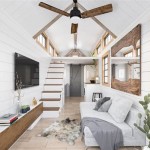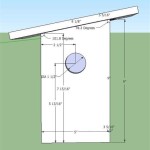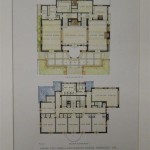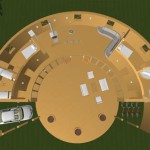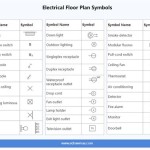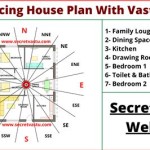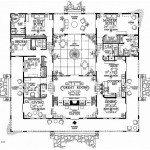Large Kitchen and Pantry House Plans: Comprehensive Design Considerations
The design of a house, especially the kitchen and pantry areas, is a crucial element for functionality, aesthetics, and overall living experience. Large kitchen and pantry house plans cater to homeowners who prioritize ample space for food preparation, storage, and potentially, entertainment. These plans require careful consideration of various factors, including layout, workflow, storage solutions, accessibility, and integration with the rest of the house. This article explores the key aspects of designing large kitchen and pantry spaces within a comprehensive house plan.
Optimizing Kitchen Layout and Workflow
The kitchen layout is paramount for efficient workflow and ease of use. Several common kitchen layouts are suitable for large kitchen spaces, each with its own advantages and disadvantages. The optimal choice depends on the homeowner's needs and preferences, as well as the overall floor plan of the house.
Island Layout: A kitchen island is a popular addition to large kitchens, providing additional countertop space, storage, and seating. Islands can be used for food preparation, serving as a breakfast bar, or even housing a sink or cooktop. The size and shape of the island should be proportional to the kitchen size, ensuring adequate space for movement around it. Consider the placement of the island in relation to the cooking zone, sink, and refrigerator to optimize workflow. For instance, incorporating a prep sink on the island can streamline food preparation.
U-shaped Layout: The U-shaped kitchen layout offers ample countertop and storage space, making it ideal for large kitchens. This layout typically consists of three walls of cabinets and appliances, creating a well-defined work triangle. The U-shape provides a significant amount of continuous counter space, suitable for multiple cooks or extensive food preparation. Careful planning is required to avoid creating dead corners and ensure efficient use of the space.
L-shaped Layout: Similar to the U-shaped design but consisting of only two walls, the L-shaped kitchen layout can be combined with an island to create a spacious and functional kitchen. The L-shape provides a clean and open feel, allowing for easy integration with adjacent living spaces. This layout benefits from strategic placement of appliances to minimize walking distances between key work areas. For example, positioning the refrigerator near the entrance of the kitchen can improve accessibility for family members or guests.
Galley Layout: The galley kitchen features two parallel runs of cabinets and appliances, creating a narrow but functional workspace. While traditionally suited for smaller spaces, a large galley kitchen can offer a streamlined and efficient layout. Adequate aisle width is critical to allow for comfortable movement between the two runs. This layout is particularly well-suited for serious cooks who prioritize efficiency and minimize distractions during food preparation.
Regardless of the chosen layout, the work triangle (the relationship between the sink, refrigerator, and cooktop) should be considered. The total distance between these three points should ideally be between 13 and 26 feet, allowing for efficient movement without excessive walking. Thoughtful placement of appliances and storage solutions within the work triangle can significantly improve kitchen functionality.
Designing Efficient Pantry Solutions
A well-designed pantry is essential for maximizing storage and organization in a large kitchen. The pantry can be a walk-in space, a series of dedicated cabinets, or a combination of both. The key is to create a system that allows for easy access to stored items and minimizes food waste. Several pantry design considerations are crucial.
Walk-in Pantry: A walk-in pantry provides ample space for storing food items, small appliances, and even kitchen linens. Consider incorporating adjustable shelving to accommodate items of varying sizes. Deep shelves can be challenging to manage, so consider using pull-out drawers or organizers to improve accessibility. Good lighting is essential in a walk-in pantry to easily identify items. A combination of ambient and task lighting is recommended. Incorporating a countertop area within the pantry can provide a dedicated space for food preparation or appliance storage.
Cabinet Pantry: Dedicated pantry cabinets can be integrated into the kitchen design to provide accessible storage. These cabinets can feature pull-out shelves, spice racks, and adjustable dividers to customize the storage space. Tall pantry cabinets are particularly useful for storing bulk items and large containers. Consider using glass-fronted cabinets to visually display pantry items and create a visually appealing display. The location of the cabinet pantry should be convenient to the main cooking areas, allowing for easy access to ingredients during food preparation.
Butler’s Pantry: A butler's pantry, located between the kitchen and the dining room, provides additional storage and workspace for serving and entertaining. This space can be used to store fine china, serving dishes, and beverages. It can also include a small sink, dishwasher, and wine refrigerator. A butler's pantry is particularly useful for hosting large gatherings, providing a staging area for food and beverages.
Storage Considerations: Effective pantry design also requires careful consideration of storage needs. Determine the types of items that will be stored in the pantry, including canned goods, dry goods, snacks, and appliances. Consider the frequency of use for each item and organize the pantry accordingly. Frequently used items should be stored within easy reach, while less frequently used items can be stored on higher or lower shelves. Labeling shelves or containers can help to maintain organization and prevent food waste. Consider using clear containers to easily identify stored items.
Ventilation and Temperature Control: Proper ventilation is important to prevent moisture build-up and maintain the quality of stored food. Consider installing a ventilation fan or ensuring adequate airflow within the pantry. Temperature control is also crucial, particularly for storing items such as canned goods and dry goods. Avoid locating the pantry near heat sources, such as ovens or dishwashers. Maintaining a consistent temperature in the pantry can help to prevent spoilage and extend the shelf life of stored items.
Integrating the Kitchen and Pantry with the Overall House Plan
The kitchen and pantry should be seamlessly integrated into the overall house plan, both aesthetically and functionally. Consider the relationship between the kitchen, dining room, living room, and outdoor spaces to create a cohesive and functional living environment. The design style of the kitchen and pantry should complement the overall design style of the house.
Open-Concept Design: Open-concept floor plans are popular for their spaciousness and social connectivity. In an open-concept design, the kitchen, dining room, and living room flow seamlessly together. This allows for easy interaction between family members and guests. The kitchen island often serves as a focal point in an open-concept design, providing a gathering space for socializing and food preparation. Careful consideration should be given to noise levels and visual clutter in an open-concept design. Soundproofing materials and strategic placement of appliances can help to minimize noise. Maintaining a clean and organized kitchen is essential to prevent visual clutter from impacting the overall aesthetic of the space.
Formal Dining Rooms: In more traditional house plans, the kitchen may be separated from the dining room by a wall or doorway. This allows for a more formal dining experience and provides a separation of space for entertaining. A butler's pantry can serve as a connecting space between the kitchen and dining room, providing additional storage and workspace for serving meals. The design style of the kitchen and dining room should complement each other, creating a cohesive and harmonious aesthetic.
Outdoor Kitchens and Entertaining Spaces: Many homeowners are incorporating outdoor kitchens and entertaining spaces into their house plans. The kitchen should be designed to facilitate easy access to outdoor spaces. Consider including a pass-through window or door to connect the kitchen to the outdoor area. An outdoor kitchen can include a grill, sink, refrigerator, and countertop space, providing a convenient area for outdoor cooking and entertaining. The design style of the outdoor kitchen should complement the overall design style of the house and the kitchen.
Accessibility and Universal Design: When designing a large kitchen and pantry, consider accessibility and universal design principles. This includes ensuring adequate space for wheelchair maneuverability, installing adjustable-height countertops, and incorporating pull-down shelves in upper cabinets. Universal design principles aim to create spaces that are usable by people of all ages and abilities. Incorporating these principles into the kitchen and pantry design can improve the functionality and usability of the space for all family members. Lever-style handles on doors and faucets, as well as easy-to-read controls on appliances, can also enhance accessibility.
Lighting Design: The kitchen and pantry require careful consideration of lighting design. A combination of ambient, task, and accent lighting is recommended. Ambient lighting provides overall illumination for the space, while task lighting provides focused illumination for specific work areas, such as the countertops and cooktop. Accent lighting can be used to highlight architectural features or decorative elements. Under-cabinet lighting is particularly useful for providing task lighting on countertops. Consider using energy-efficient LED lighting to reduce energy consumption and lower utility bills. Dimmable lighting allows for adjusting the light levels to create different moods and atmospheres. Proper lighting design can enhance the functionality and aesthetics of the kitchen and pantry.
Material Selection: The selection of materials for the kitchen and pantry is crucial for both aesthetics and durability. Countertops, cabinets, flooring, and backsplash materials should be chosen to withstand the demands of a busy kitchen environment. Durable and easy-to-clean materials are recommended. Granite, quartz, and solid surface countertops are popular choices for their durability and stain resistance. Solid wood or engineered wood cabinets offer longevity and aesthetic appeal. Tile or hardwood flooring are durable and easy to maintain. Backsplash materials, such as tile or glass, can add visual interest and protect the walls from splashes and spills. Consider the overall color scheme and design style when selecting materials to create a cohesive and harmonious look.

Huge Kitchen With Walk In Pantry 14108kb Architectural Designs House Plans

Contemporary Home Plans With Great Kitchens Houseplans Blog Com

Harrison Place House Plans Cool Designs Dream

House Plan 4 Bedrooms 3 5 Bathrooms Garage 2655 V1 Drummond Plans

House Styles What S Hot And Not Houseplans Blog Com

Family Home Plans We Love Blog Eplans Com

3 Bedroom Traditional House Plan With Outdoor Kitchen

Barndominium Plans With Open Kitchens Blog Eplans Com

Pin On Plans

Trending House Plans With Large Kitchens Houseplans Blog Com

